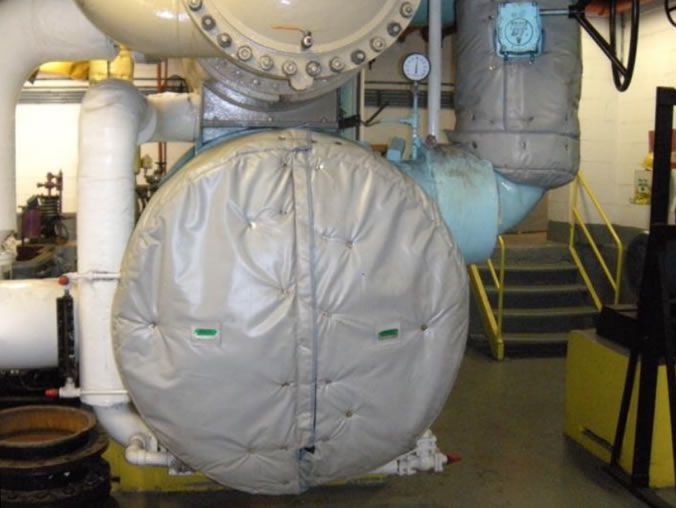LOW TEMPERATURE – HOT WATER & CHILLED WATER BLANKETS
LT250VP (LT121C-VP)
INTRODUCTION
Shannon Thermal Blanket Anti-Sweating Insulation is a CAD designed, CNC produced, high quality pre-engineered insulation system designed to save energy, capture radiant heat, minimize insulation maintenance and improve the surrounding work environment. Shannon Thermal Blanket is capable of withstanding severe indoor and outdoor environments. Shannon Thermal Blanket is flexible, easy to install, remove and reinstall, allowing quick access and easy equipment serviceability. The key benefit is re-usability.
Applications:
Valves, Flanges, Pumps, Instrumentation, Fittings, Equipment and Equipment Heads. Complex geometry that otherwise would not see insulation as a result of service, inspection and repair.
Markets:
Institutional, Commercial, University & Healthcare.
Service Temperature/Condition
Chilled Water & Hot Water This design is to act as a Non-Porous Thermal Insulation Barrier with a maximum service temperature of 250˚F (121˚C).
Product Components
Outer/Inner Jacketing – 18.0oz/yd² (611g/m²) Vinyl Coated Polyester Cloth. The Insulation Core consists of an 11lb/ft3 (176.2 kg/m³ ) Fiberglass Needled Mat Insulation, a Type E Fiber. The insulation core is encapsulated by the Outer/Inner Jacketing and sewn together, producing a Self Contained Blanket System. The Blanket System includes Integral Fasteners for install & removal.

Liquid Chiller Water Box & Control Valve
BLANKET THICKNESS SURFACE TEMPERATURE REFERENCE
Operating Temp |
Thickness |
Surface Temp |
Thickness |
Surface Temp |
Thickness |
Surface Temp |
|---|---|---|---|---|---|---|
| 121˚ C (250˚ F) | 25 mm( 1″) | 37.9˚ C (100.2˚ F) | 40 mm( 1.5″) | 33.3˚ C (92.0˚ F) | 50 mm (2″) | 30.8˚ C (87.4˚ F) |
* The above referenced Cold Face Surface Temperatures should be used as guidelines for blanket insulation thickness design.
* The Cold Face Surface Temperature of the blanket should approach surrounding ambient temperature conditions.
* The economic thickness of the blanket should consider blanket cost, thermal performance and blanket design constraints.
* Heat loss calculations are based on a 21.1˚ C (70˚ F) ambient temperature using a flat surface condition.
